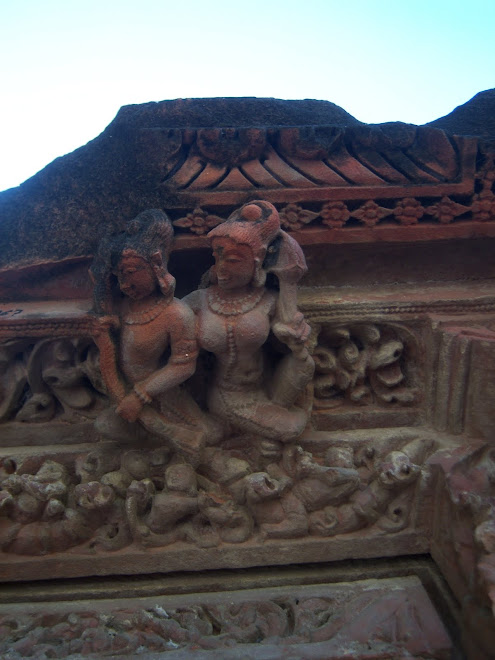

the life in Jhalawar
Jhalawar is beautiful place in India Rajasthan and has astounding examples of art Indian reflected even in contemporary creations. Must visit the historical and the modern.

 Buddha --Meditating
Buddha --Meditating Buddha Standing
Buddha Standing Chaitya
Chaitya Buddha--kolvi
Buddha--kolvi sculpture Shantinath Temple Jhalrapatan
sculpture Shantinath Temple Jhalrapatan

 Jhalrapatan-shantinath mandir
Jhalrapatan-shantinath mandir Flower-seller by the Surya Mandir
Flower-seller by the Surya Mandir Nursing past memories
Nursing past memories The Cylindrical jharokha has emerged from a grand Palace of yore
The Cylindrical jharokha has emerged from a grand Palace of yore A tiny diamond sitting over a ring of crass commercial base
A tiny diamond sitting over a ring of crass commercial base The beautiful pottery and its creator
The beautiful pottery and its creator another lovely creation of the artist--woven baskets, leaf-carpets and brooms all from Nature and totally envirionment friendly
another lovely creation of the artist--woven baskets, leaf-carpets and brooms all from Nature and totally envirionment friendly Bhawani Natyasala--it had seen glorious days; hope they will come back
Bhawani Natyasala--it had seen glorious days; hope they will come back 2. Hoysaleswara Temple Halebid Karnataka (Dwarsamudra)
2. Hoysaleswara Temple Halebid Karnataka (Dwarsamudra) 3. Ranakpur Adinath Temple
3. Ranakpur Adinath Temple 1. the jain Basadi Lakkundi Karnataka Western Chalukya
1. the jain Basadi Lakkundi Karnataka Western Chalukya
 Mother and Child from Ranakpur Jain temple
Mother and Child from Ranakpur Jain temple Mother and child as I travelled to Boroli temples recently
Mother and child as I travelled to Boroli temples recently the Sun Temple Jhalrapatan--Mother child
the Sun Temple Jhalrapatan--Mother child Shantinath Jain temple--Mother Child
Shantinath Jain temple--Mother Child





















